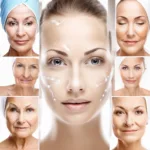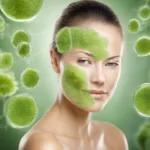13 January 2024
Study reveals the anti-inflammatory and anti-aging properties of Macrocystis Pyrifera Ferment
A recent study published in the Journal of Cosmetic Dermatology has shed light on the potential benefits of facial application of Macrocystis Pyrifera Ferment. Researchers have found that this ferment, derived from sustainably harvested giant sea kelp, may help reduce inflammation and signs of aging when applied topically. The study also evaluated the role of Macrocystis Pyrifera Ferment in optimizing facial skin rejuvenation. These findings offer new insights into the field of specialized aesthetic skincare.
Enhancing Barrier Integrity and Collagen Production
Preclinical research has demonstrated that Macrocystis Pyrifera Ferment enhances the integrity of the skin barrier. In vitro studies have shown that cells treated with the ferment exhibit faster migration compared to untreated cells. Additionally, topical application of Macrocystis Pyrifera Ferment on human skin explants has been found to increase the production of collagen type I, which tends to decrease with age. These findings suggest that the ferment may have a positive impact on skin health and aging.
Anti-Inflammatory and Soothing Benefits
Clinical data from studies involving Macrocystis Pyrifera Ferment alone and in two moisturizing creams have shown anti-inflammatory activity and visible soothing benefits. Erythema, a common sign of inflammation, was significantly reduced with the use of these products. The research indicates that Macrocystis Pyrifera Ferment has the potential to alleviate skin inflammation and provide relief for individuals with sensitive or irritated skin.
Barrier Support and Moisturization
Studies investigating the effects of Macrocystis Pyrifera Ferment on the stratum corneum, the outermost layer of the skin, have shown promising results. The use of creams containing the ferment has been found to enhance barrier strength and recovery by increasing moisture levels and decreasing transepidermal water loss. These findings suggest that Macrocystis Pyrifera Ferment could play a role in maintaining skin hydration and preventing moisture loss.
Clinical Effects on Visible Facial Skin Aging
Clinical studies evaluating the effects of creams containing Macrocystis Pyrifera Ferment on visible signs of facial skin aging have reported significant improvements, including a decrease in redness. The research indicates that these creams may have anti-aging properties and could potentially help individuals combat the effects of aging on their skin.
Safety and Limitations
The study found that Macrocystis Pyrifera Ferment and the creams containing it were safe for facial application, with no confirmed adverse events reported. However, the researchers acknowledged the limitations of the study, including small sample sizes and a lack of biomarkers to validate the ferment’s activity. Additionally, there is a need for more robust clinical data comparing the effects of different facial rejuvenation skincare products.
Conclusion:
The research on Macrocystis Pyrifera Ferment and its potential benefits in skincare is promising. The study suggests that this ferment has anti-inflammatory and anti-aging properties, promotes healing, and enhances barrier support and moisturization. The findings contribute to a better understanding of specialized aesthetic skincare and offer new possibilities for improving facial rejuvenation techniques. However, further research is needed to validate these findings and explore the full potential of Macrocystis Pyrifera Ferment in skincare applications.
Disclaimer: This research was funded by La Mer, and some of the study authors have affiliations with skincare companies.


